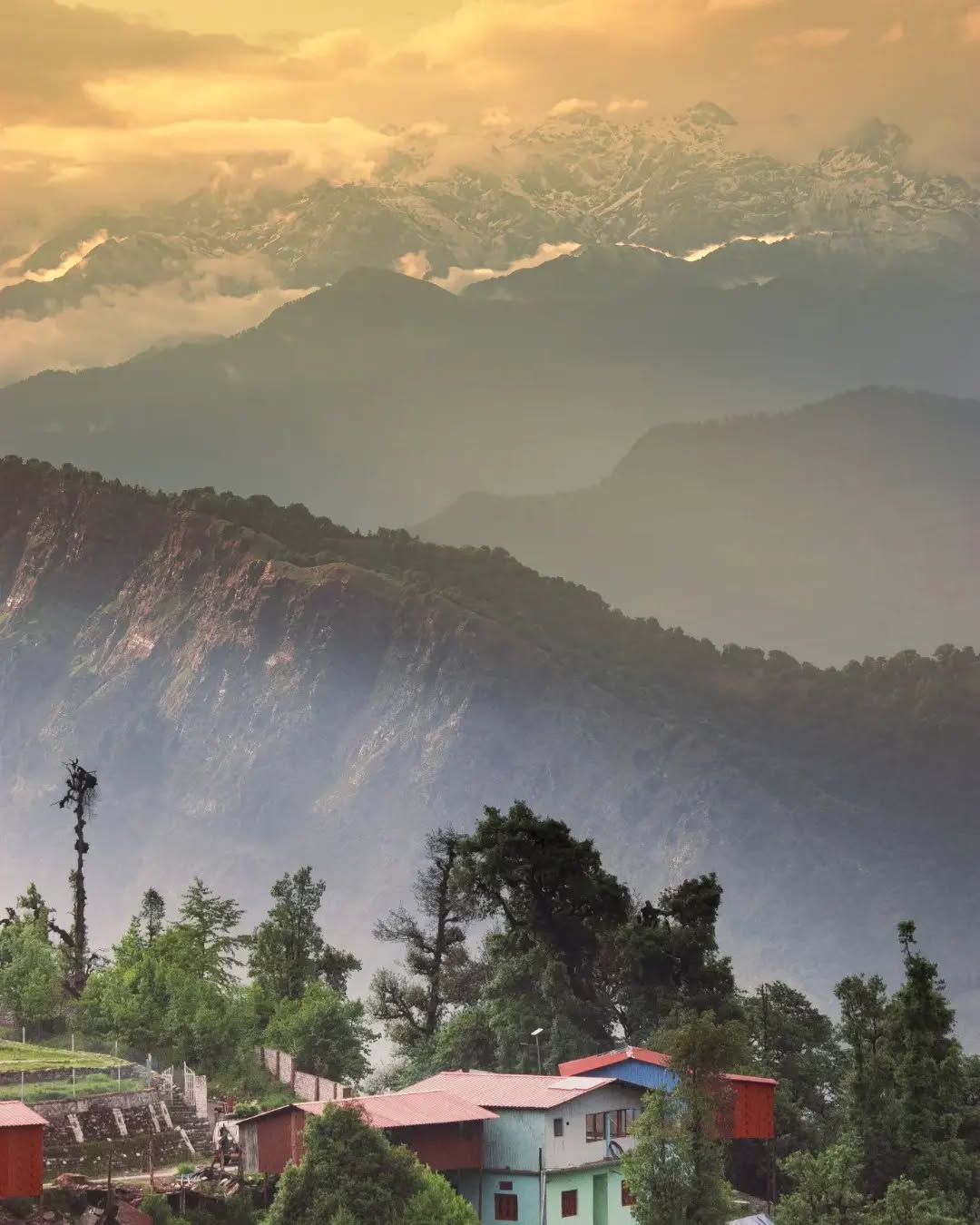Explore Chopta Tungnath Trek: Your Ultimate Guide to a Himalayan Adventure
The Chopta Tungnath Trek is one of the most captivating and rewarding treks in Uttarakhand, drawing adventurers from all over the world. Starting from Chopta, the trek leads you to the ancient Tungnath Temple, a renowned pilgrimage site dedicated to Lord Shiva. The Tungnath Temple trek is an experience that combines religious significance with scenic beauty, making it a perfect journey for both spiritual seekers and nature lovers alike.
The adventure doesn’t end at the temple. From Tungnath, the Chandrashila summit trek takes you to a higher altitude, offering mesmerizing views of the Himalayan peaks like Nanda Devi, Trishul, and Chaukhamba. This makes the Chopta Chandrashila trek an exciting challenge for trekkers looking for a more adventurous route. The crisp mountain air and breathtaking landscapes along the way make the trek unforgettable.
For trekkers traveling from Delhi, the Chopta Chandrashila trek from Delhi is easily accessible with a few days’ trip, allowing you to explore the best of Chopta and its surroundings. Whether you opt for a Chopta tour package or decide to trek independently, various Chopta tour package offer excellent itineraries, catering to both novice trekkers and experienced adventurers. These packages are designed to provide you with a hassle-free experience, including accommodations, transport, and guiding services. So, embark on the Chopta Tungnath trek and witness the grandeur of the Himalayas firsthand!
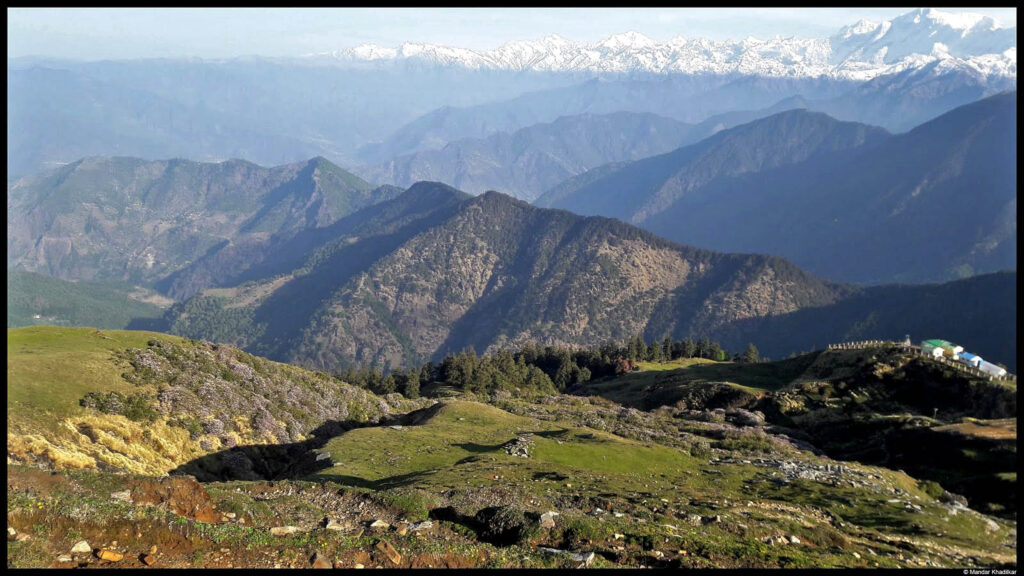
A Thrilling Adventure Experience Awaits You
If you’re seeking the perfect blend of natural beauty, thrilling adventure, and unforgettable views, then the Chopta Tungnath trek is your ultimate destination. Nestled in the heart of Uttarakhand, Chopta offers one of the most exhilarating treks in the Himalayas, attracting adventure lovers from all over the world. Whether you’re an experienced trekker or a beginner, this trek promises an experience like no other.
In this guide, we’ll take you through the essence of the Chandrashila trek, why the Tungnath Chandrashila trek from Delhi is so popular, and what makes the Chopta tour packages an essential part of your adventure. Get ready for a thrilling journey through one of the most scenic regions of India.
The Perfect Trekking Destination: Chopta
Known for its scenic views and serene landscapes, Chopta is often referred to as the “Mini Switzerland of India.” But beyond its picturesque beauty, it also offers exciting trekking routes that cater to all kinds of adventurers. Whether you are embarking on the Chopta Chandrashila trek from Delhi or taking a guided trip as part of Chopta tour packages, every step you take here brings you closer to the awe-inspiring vistas of the Himalayas.
Chopta Tungnath Trek: A Trekker’s Paradise
One of the most iconic treks in India, the Chopta Tungnath trek takes you to the highest Shiva temple in the world, Tungnath Temple. At an altitude of 3,680 meters, this trek is a challenge but comes with an immense reward—stunning panoramic views of snow-capped peaks like Nanda Devi, Trishul, and Chaukhamba.
For those who want a slightly more challenging experience, the Chandrashila summit trek offers an opportunity to trek all the way to the summit, which sits at 4,000 meters above sea level. From here, you get 360-degree views of the Himalayan range, making the Tungnath Temple trek and Chandrashila summit trek a must for all nature enthusiasts.
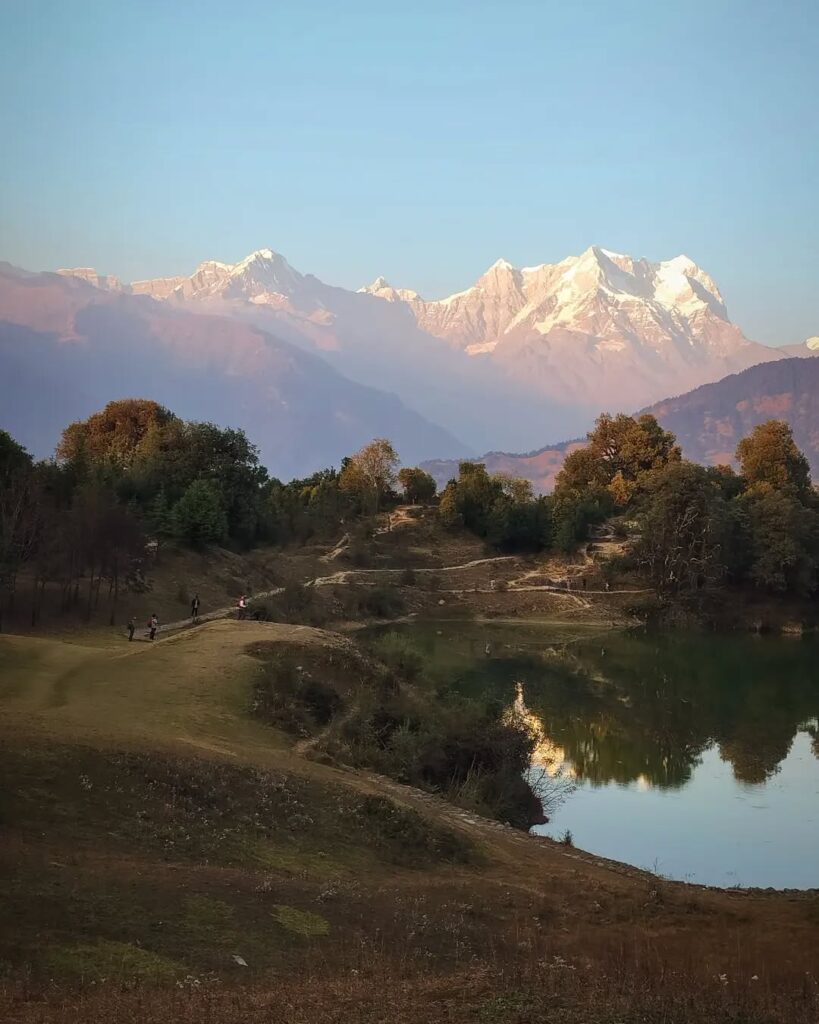
Adventure Awaits: Why Choose Chopta for Your Trekking Journey
1. Unmatched Scenic Views
The Chopta Tungnath trek from Delhi takes you through dense forests, open meadows, and alpine landscapes. As you trek towards Tungnath, you are greeted by breathtaking views of the Himalayas. On the Chandrashila trek, the panoramic view from the summit is an adventure lover’s dream. The stunning backdrop of snow-capped peaks and the lush valleys below offers perfect photographic moments.
2. Challenging yet Accessible Trekking Routes
The Chopta Chandrashila trek is moderately difficult and suitable for trekkers of all skill levels. While the initial trek to Tungnath Temple is relatively easy, ascending to Chandrashila summit requires stamina, determination, and proper gear. For those looking for a bigger adventure, this trek will push your limits while offering immense satisfaction upon reaching the summit.
3. Affordable Adventure with Chopta Tour Packages
For those who want a hassle-free experience, Chopta tour packages provide an all-inclusive option for trekkers. From transportation to accommodation, these packages ensure that everything is taken care of, allowing you to focus solely on the adventure. Whether you’re embarking on a Chopta Tungnath trek from Delhi or planning a Chopta Chandrashila trek, these packages provide the perfect balance of comfort and adventure.
4. A Spiritual Journey
The Tungnath Temple trek is not just a physical journey but also a spiritual one. As you make your way to one of the holiest shrines dedicated to Lord Shiva, you can reflect, meditate, and experience a profound connection with nature and spirituality. For many trekkers, reaching the temple is as fulfilling as reaching the summit itself.
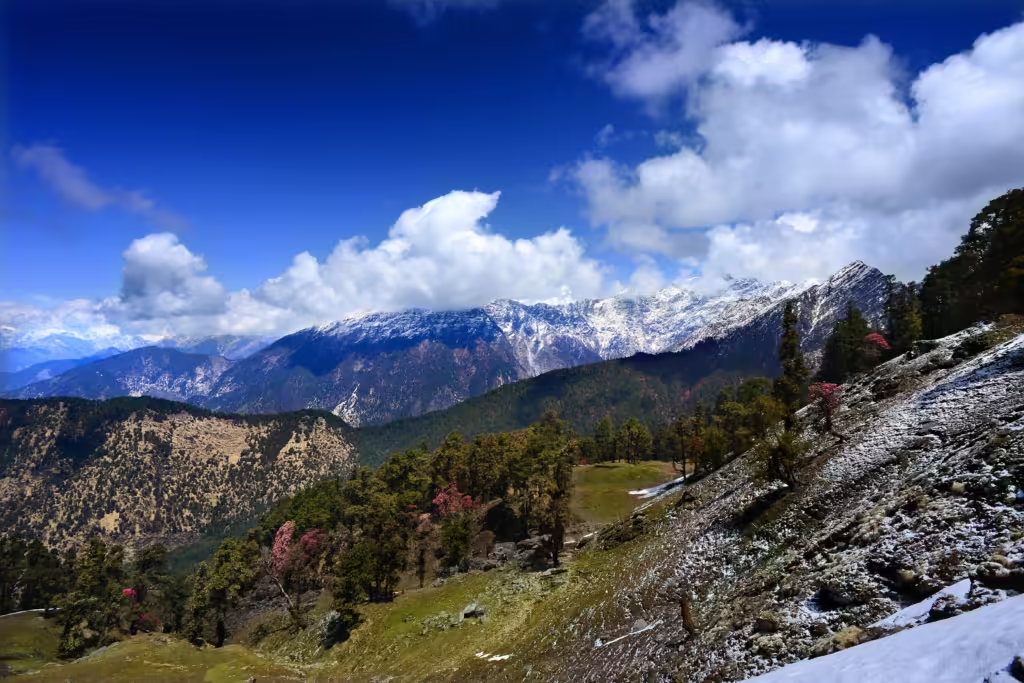
Chopta Chandrashila Trek: A Hidden Gem in the Himalayas
The Chopta Chandrashila trek is one of the lesser-known yet awe-inspiring treks in the Himalayas. It offers trekkers the opportunity to explore pristine forests, ascend snow-covered peaks, and experience the thrill of climbing to one of the highest points in Uttarakhand.
Unmatched Beauty at Every Step
What sets the Chopta Chandrashila trek from Delhi apart is its diverse range of ecosystems. As you trek through lush forests, you will encounter a variety of flora and fauna, from towering oaks to colorful rhododendron trees. The region is also home to diverse wildlife, including Himalayan Monal and various species of pheasants.
A Must-Do Trek for Adventurers
The Chopta Chandrashila trek is ideal for those who seek a more challenging adventure. With its steep climbs and breathtaking views, it promises a sense of accomplishment once you reach the summit. The panoramic view from the top of Chandrashila is unparalleled, offering a view of the entire Himalayan range. It’s the perfect place for anyone looking to push their limits and experience the wild, untamed beauty of the Himalayas.
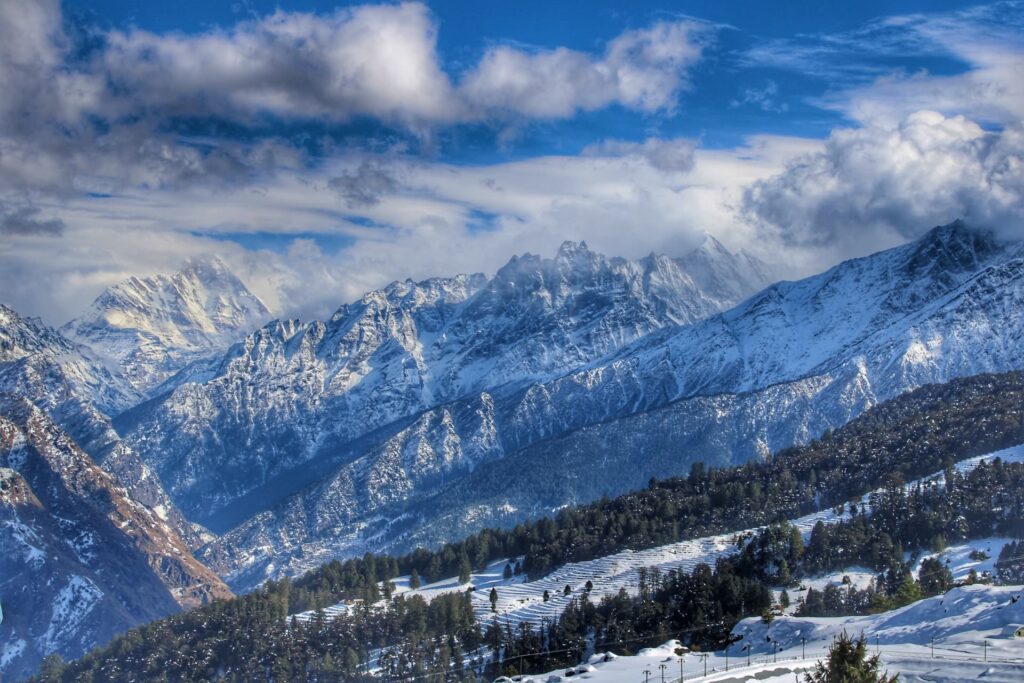
Perfect for Groups: The Ultimate Group Adventure
Trekking to Tungnath and Chandrashila is even more thrilling when shared with friends and family. With the right group, you can make your Chopta Tungnath trek or Chopta Chandrashila trek a fun-filled adventure. Chopta tour packages offer options for group tours, making it easier for you to travel with others who share your passion for adventure. Whether you’re a group of seasoned trekkers or beginners, the trek will offer you both an exciting challenge and a great bonding experience.
When is the Best Time to Visit for Adventure and Views?
Planning an adventure and seeking the best views can significantly depend on when you choose to embark on your journey. Whether you are heading towards the towering peaks of the Chopta Tungnath trek or the serene wilderness of Chandrashila summit trek, the timing of your trip plays a crucial role in maximizing both the thrill and the beauty of the landscapes. Here’s a detailed guide on when to visit for the best adventure and the most spectacular views, along with the top seasons to experience Chopta tour packages and Chopta Chandrashila trek.
Spring: The Season of Bloom and Clear Views
Spring is one of the best seasons to visit for both adventure seekers and those who want to experience awe-inspiring views. The months from March to May offer pleasant temperatures, clear skies, and the beauty of blooming flowers, making it a perfect time to enjoy the Tungnath Chandrashila trek from Delhi.
- Best for Adventure: Spring is ideal for trekking because the weather is mild, making it easier to tackle the Chopta Tungnath trek or the Chopta Chandrashila trek without the extreme cold or heat. As you trek through lush forests, the landscape is filled with vibrant wildflowers, adding to the experience.
- Best Views: During spring, the skies are usually clear, offering uninterrupted views of the majestic Himalayas. From the Tungnath Temple trek, the view of snow-covered peaks like Nanda Devi and Trishul is nothing short of spectacular.
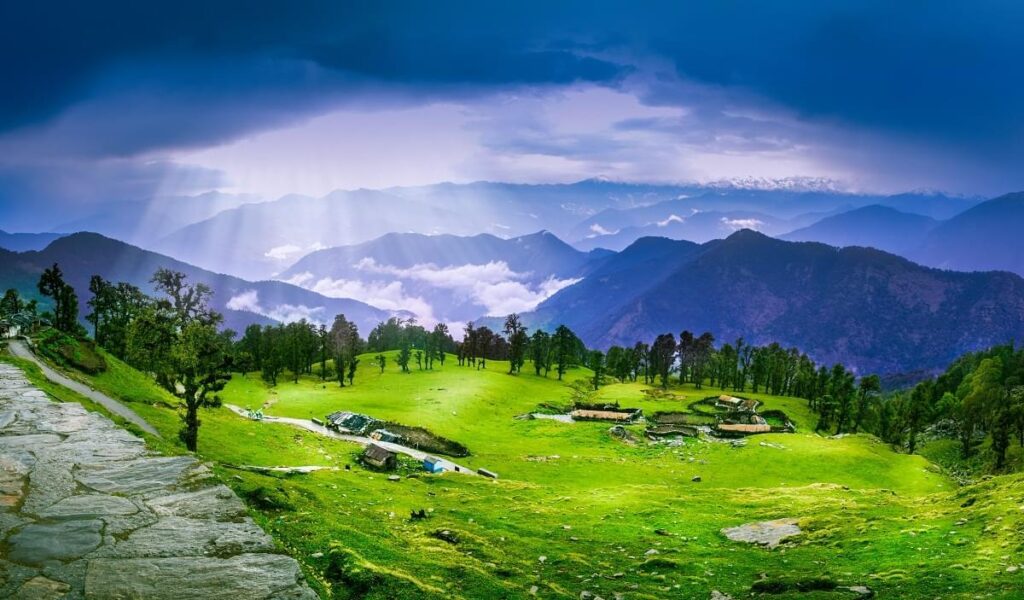
Summer: A Perfect Time for High Altitude Treks
If you’re looking for a summer getaway to escape the heat, the Chopta Tungnath trek from Delhi offers a refreshing retreat. Summer in the Himalayan region, from June to August, provides the perfect opportunity to explore the outdoors, with the added advantage of clear roads and dry conditions.
- Best for Adventure: Summer trekking in Chopta is quite enjoyable because the temperatures are comfortable for outdoor activities. The Chopta tour packages during summer offer a chance to explore the Chandrashila summit trek, one of the most popular treks, without being deterred by snow and icy paths.
- Best Views: The panoramic views from Chandrashila are breathtaking, and in summer, the lush greenery and alpine meadows paint the landscape with a lush green palette. You’ll also see a variety of wildlife, making this season ideal for nature lovers and photographers.
Monsoon: A Hidden Adventure with Less Crowds
While monsoon season may not be the first choice for many, it has its own unique appeal, especially for those seeking adventure without the typical crowds. July to September bring heavy rainfall, transforming the region into a lush, green paradise.
- Best for Adventure: For the more adventurous, the monsoon season offers a chance to tackle the Chopta Chandrashila trek in less crowded conditions. The challenge of navigating through the wet and slippery trails adds an element of excitement, though it requires careful planning and caution.
- Best Views: Monsoon seasons often result in low clouds and mist, which can create an ethereal, mystical atmosphere. While the views of distant peaks may be obscured, the cloud formations and rain-soaked valleys offer a completely different experience that can be just as beautiful.
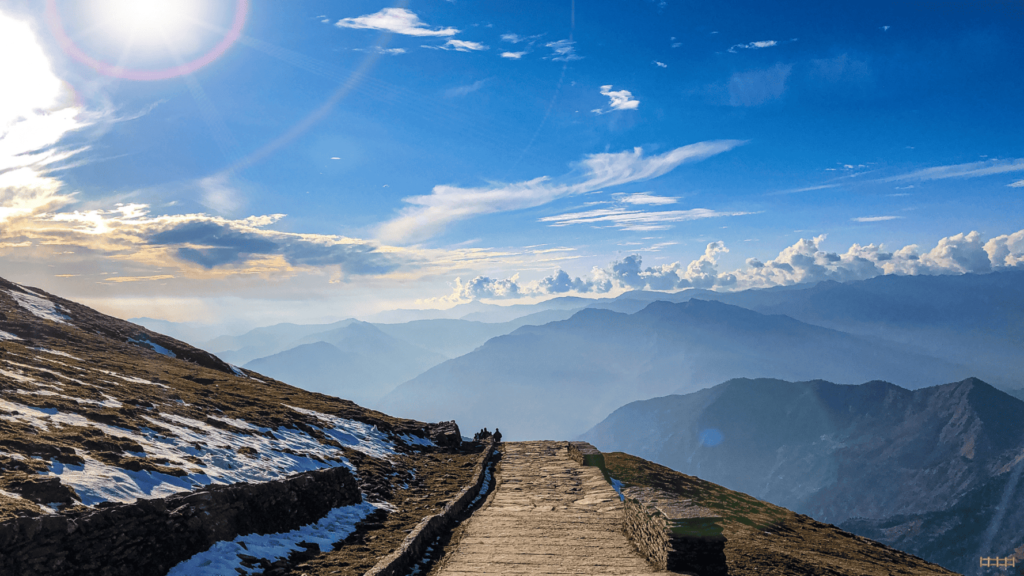
Autumn: The Golden Season for Views and Trekking
Autumn, from September to November, is arguably the best season for adventure and views in the Chopta region. After the monsoon, the weather stabilizes, and the temperatures become more manageable for trekking. The skies are clearer, and the landscape is refreshed.
- Best for Adventure: This is the prime trekking season in Chopta, as the paths are no longer slippery and the weather is ideal for long hikes. You can embark on the Chopta Tungnath trek, Tungnath Chandrashila trek from Delhi, or the Chopta Chandrashila trek without worrying about rain or extreme temperatures.
- Best Views: Autumn offers some of the clearest skies and most beautiful views of the Himalayas, with unobstructed views of snow-capped peaks and deep valleys. The golden hues of autumn also make it a photographer’s dream, with rich colors of changing leaves and crisp air.
Winter: A Snowy Wonderland for Hardcore Adventurers
For those who crave the challenge of winter trekking, the months from December to February are ideal, especially if you want to experience the Chopta Tungnath trek during the snow season. This season transforms the region into a snow-covered wonderland, perfect for those looking to challenge themselves in the harsh cold.
- Best for Adventure: Winter trekking in Chopta is reserved for experienced trekkers. The Chopta Chandrashila trek from Delhi during winter is a rewarding challenge, with trails covered in thick snow and temperatures plummeting, creating a true winter adventure. Those willing to brave the cold are rewarded with mesmerizing views and the tranquility of a snow-blanketed landscape.
- Best Views: Winter brings a surreal beauty to the Chopta Chandrashila trek. The snowy landscapes provide a pristine setting, with views of Nanda Devi and other peaks standing out against the crisp blue sky. The stillness and silence of winter in the Himalayas make it an unforgettable experience for trekkers who are prepared for the challenges.
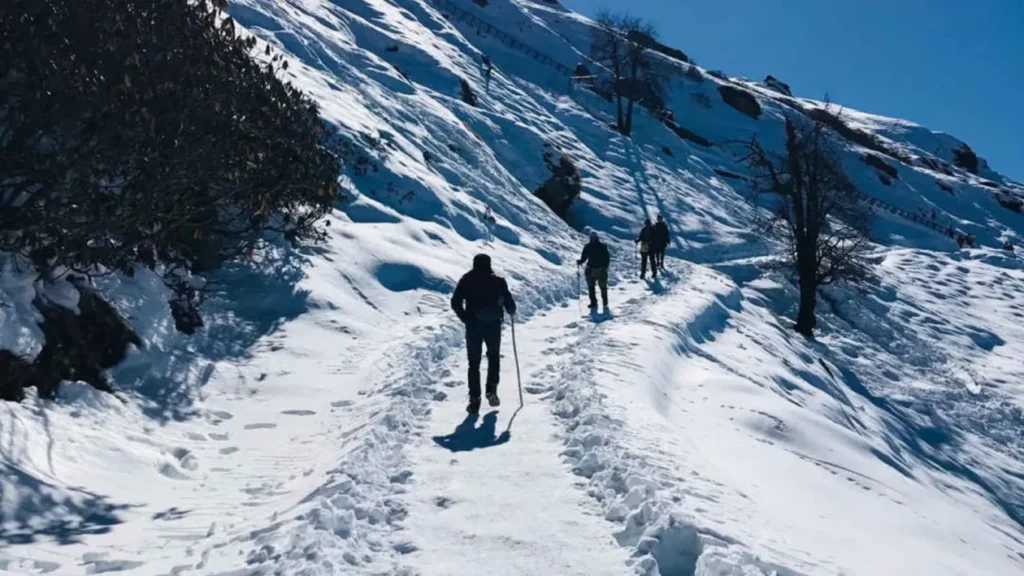
How to Take the Best Shots of Snowy Peaks: A Guide for Photographers
The snowy peaks of the Chopta Tungnath trek offer some of the most stunning and dramatic photography opportunities in the Himalayas. Whether you’re trekking on the Chandrashila summit trek or enjoying a Chopta tour package, capturing the pristine beauty of snow-covered mountains requires careful planning and technique. Here’s how you can get the best shots of those snow-capped peaks during your adventure.
Choose the Right Time of Day for Snowy Peak Photography
When photographing snowy peaks on your Chopta Chandrashila trek, the time of day plays a crucial role in capturing the essence of the landscape. Early mornings and late afternoons provide the soft light that works best for snow photography.
- Golden Hour: The early morning or late afternoon light, often referred to as the golden hour, bathes the Tungnath Temple trek and its surroundings in a warm, golden glow. This lighting creates striking contrasts between the crisp white snow and the golden hues of the peaks.
- Blue Hour: Before sunrise or after sunset, the light takes on cooler tones, turning the sky and the snow a serene blue. This is perfect for capturing the quiet, peaceful atmosphere of the snow-covered peaks during the Chandrashila summit trek.
Use a Polarizer Filter to Enhance the Snow
Snowy peaks, especially on the Chopta Tungnath trek from Delhi, can appear overly bright, making it difficult to capture the details and textures of the landscape. A polarizer filter helps to reduce the glare and reflections from the snow, allowing you to get clearer, more vibrant shots.
- Reducing Glare: The polarizer filter helps reduce the brightness of the snow and enhances the contrast between the peaks and the sky, bringing out details in the snow that would otherwise be washed out.
- Enhancing Colors: A polarizer will also deepen the color of the sky and enhance the contrast between the snow and the surrounding elements like rocks and trees. This is particularly useful when photographing the Chandrashila trek and the surrounding landscape.
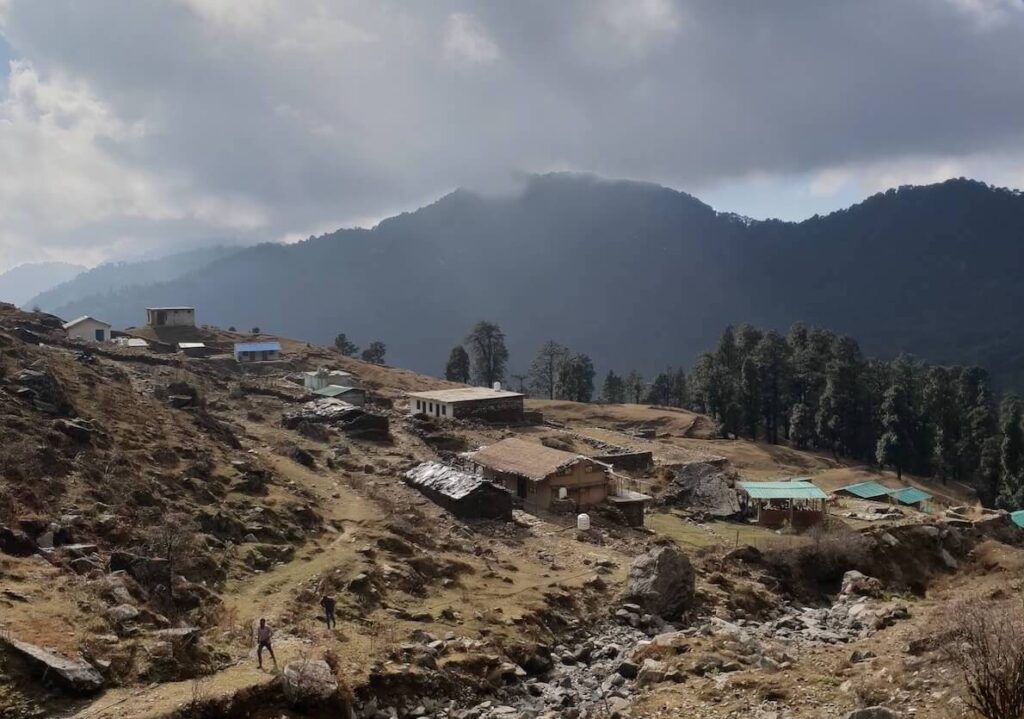
Use Manual Settings for Proper Exposure
Snow can trick your camera’s automatic settings into overexposing the shot. To ensure you capture the true beauty of the snowy peaks on the Chopta Chandrashila trek from Delhi, use manual settings to properly expose your image.
- Adjust Exposure Compensation: Snow is highly reflective, which can cause your camera to underexpose the shot. Use the exposure compensation feature to brighten your images and capture the crisp whites of the snow without losing detail.
- Shutter Speed and Aperture: For clear and sharp images of the Tungnath Temple trek, use a small aperture (higher f-number) to ensure that both the foreground and the snow-covered peaks are in focus. A faster shutter speed is essential to freeze the action, particularly when shooting in windy conditions or if you want to capture falling snow.
Focus on the Contrast Between Snow and Sky
One of the most striking features of Chopta Tungnath trek and Chandrashila trek photography is the contrast between the white snow and the deep blue sky. To highlight this contrast, you need to pay attention to your framing and composition.
- Wide-Angle Lens: Use a wide-angle lens to capture the vastness of the snow-covered peaks. The wide field of view will help you emphasize the contrast between the snow and the sky while including surrounding elements like trees or trekkers for added scale.
- Framing and Composition: Position the snowy peaks in a way that the vast sky or an interesting foreground leads the viewer’s eye towards them. The Chopta Chandrashila trek from Delhi offers excellent opportunities for panoramic shots that showcase both the peaks and the sweeping skies.
Capture the Details of Snow and Ice
While wide shots of snowy peaks are breathtaking, don’t forget to focus on the smaller details that make snow photography unique. Capture the textures of the snow, the patterns created by wind, or the ice formations along the Tungnath Temple trek.
- Close-Up Shots: Zoom in on the snow to capture the intricate details, such as snowflakes, frost on rocks, or ice crystals on tree branches. The Chandrashila summit trek offers plenty of opportunities for macro shots, where the texture of snow adds an extra layer of visual interest.
- Contrasting Elements: Look for elements like rock formations, pine trees, or ice-covered branches that provide contrast against the white snow. These can help add depth and visual interest to your images, especially in the Chopta Tungnath trek.

Use a Tripod for Stability
When photographing snowy peaks on the Chopta Tungnath trek, especially in low-light conditions such as sunrise or sunset, a tripod is essential. It provides stability for long exposure shots, which can help you capture the movement of the clouds around the peaks or create a silky effect with falling snow.
- Long Exposure for Clouds: A tripod allows you to take longer exposures, which is ideal for capturing the movement of clouds over the snowy peaks. The resulting images will have a dreamy, ethereal quality that emphasizes the dramatic atmosphere of the Chandrashila trek.
- Night Photography: The Tungnath Chandrashila trek offers fantastic opportunities for night photography. A tripod is a must if you want to capture the night sky, star trails, or the Milky Way above the snow-covered mountains.
Experiment with Black and White Photography
The Chopta Chandrashila trek offers fantastic opportunities for black and white photography. The high contrast between the snow and the mountain terrain can produce striking monochrome images that highlight the textures and the drama of the landscape.
- Enhancing Contrast: Black and white photography helps emphasize the stark contrast between the snow, rocks, and sky, bringing out textures that might otherwise be lost in color shots. The Chopta Tungnath trek from Delhi offers a perfect canvas for this style of photography, with its dramatic landscape and sharp contrasts.
- Mood and Atmosphere: Black and white photos of snow-covered peaks convey a sense of timelessness and solitude. Try shooting in these conditions to create atmospheric images that evoke the raw beauty of the Chandrashila summit trek.
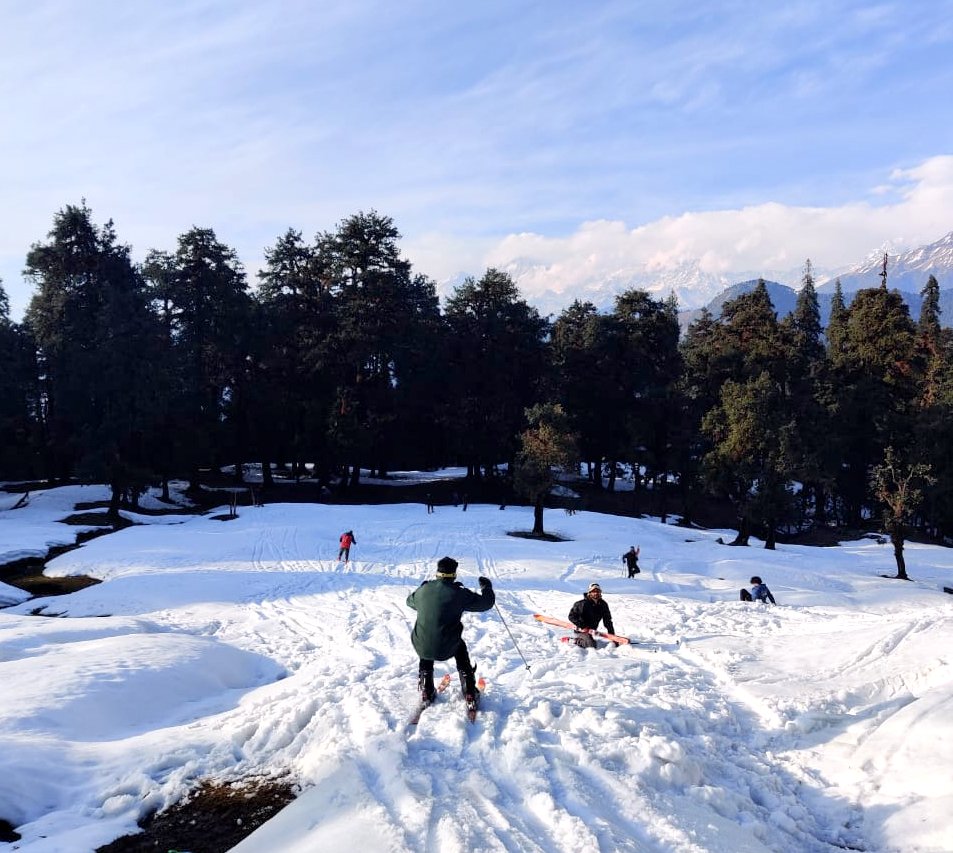
Prepare for Changing Weather Conditions
Weather in the Chopta Tungnath trek can change rapidly, so it’s important to be prepared for any conditions. Snowfall, fog, and even sudden sunshine can all offer unique photography opportunities.
- Capture Snowfall: If you’re lucky enough to be trekking during snowfall, use a fast shutter speed to capture the falling snowflakes as they hit the snow-covered ground. Snowstorms can also create dramatic, moody skies, perfect for storytelling shots.
- Clear Skies After a Storm: After a snowstorm clears, the air is often crisp and clear, giving you the chance to photograph the peaks against a bright blue sky. Use this time to capture wide vistas of the Tungnath Temple trek and surrounding peaks.
Use the Environment for Scale
One of the key aspects of photographing the Chopta Chandrashila trek is to use surrounding elements to provide a sense of scale. Including trekkers, trees, or wildlife in your shots will help convey the vastness of the Tungnath Chandrashila trek and the scale of the snow-covered mountains.
- Trekking Groups: Capture shots of fellow trekkers on the path with the snowy peaks in the background. This will help illustrate the sense of achievement and scale as you near the summit of Chopta Tungnath trek.
- Framing with Trees: Including trees or rock formations in your frame can create natural frames around the snowy peaks, highlighting the contrast between the white snow and the rugged terrain.
Chopta Tungnath Trek: Photography Tips for Capturing the Clouds and Peaks
The Chopta Tungnath trek offers some of the most breathtaking views in the Himalayas. From the snow-capped peaks to the drifting clouds and the mystical landscapes, this trek is a paradise for nature and adventure photographers. If you’re heading out on the Chandrashila summit trek or the Chopta Chandrashila trek from Delhi, having the right photography gear and skills can help you capture the mesmerizing beauty of the mountains. Here are some essential tips for taking amazing photos during the Tungnath Temple trek.
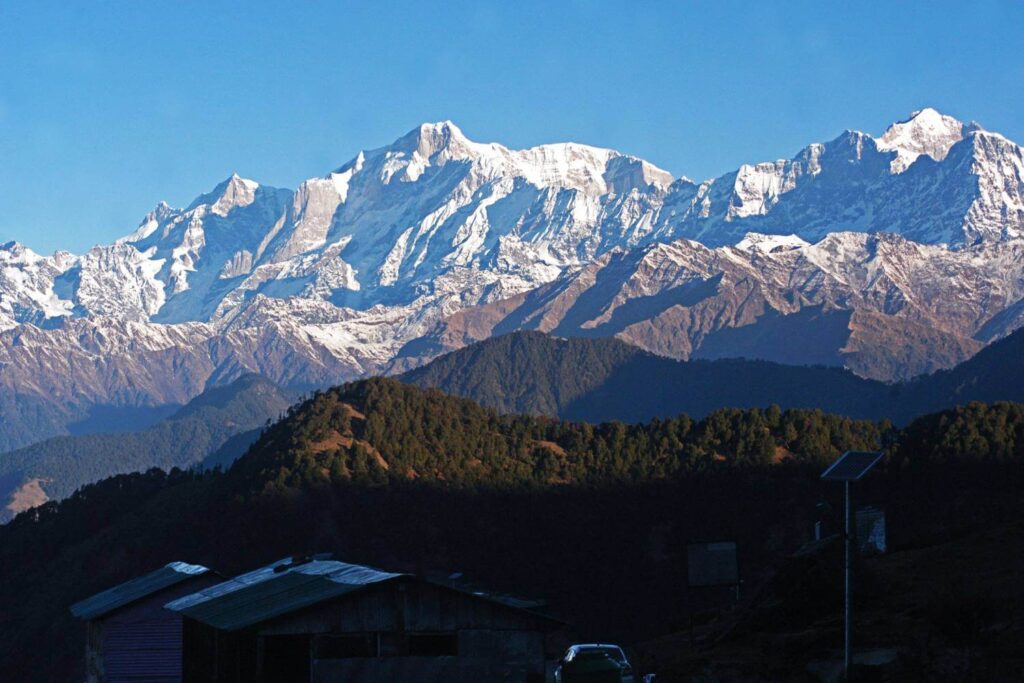
Capture the Clouds and Peaks with the Right Composition
The Chopta Tungnath trek from Delhi is renowned for its sweeping views of snow-capped peaks, lush meadows, and dynamic cloud cover. To capture these breathtaking scenes, use the principles of composition in photography.
- Rule of Thirds: Instead of centering your shot, apply the rule of thirds to make your photographs more dynamic. Place key elements, like the peaks or the clouds, off-center to create more interest in your photos.
- Leading Lines: The winding trails of the Tungnath Chandrashila trek offer perfect opportunities for leading lines. Use the path or the contour lines of the mountains to guide the viewer’s eye toward the distant peaks.
- Clouds as a Foreground: The Chopta Chandrashila trek offers dramatic cloud formations, particularly in the mornings. Capture the clouds as they move around the peaks, adding depth and texture to your shots.
Focus on the Details: Macro Photography in the Himalayas
While the grand vistas of Chopta Tungnath trek are a must-see, don’t forget to capture the smaller details. Macro photography of local flora, insects, and textures on the trails adds a unique dimension to your adventure portfolio.
- Wildflowers: During the trek, look for wildflowers like the Himalayan blue poppy and alpine plants. These vibrant colors can make for stunning close-up shots.
- Textures: Close-ups of the mountain rocks, snowflakes, and even tree bark can offer interesting perspectives. Focus on textures to capture the raw essence of the Himalayas.
Use a Tripod for Stable Shots in Low Light
If you’re planning to photograph the Chandrashila summit trek or the mesmerizing sunrise over Tungnath Temple, a tripod is essential. Low light conditions, especially at dawn or dusk, can make handheld photography challenging.
- Long Exposure Shots: A tripod will allow you to take long exposure shots, which can capture the movement of clouds around the peaks, creating an ethereal effect. It’s particularly effective for photographing the fast-moving clouds at the summit of Chandrashila.
- Star Photography: For those interested in astrophotography, the clear skies of Chopta Tungnath trek are perfect for capturing the Milky Way or star trails. A tripod, along with long exposure settings, is necessary for these stunning shots.
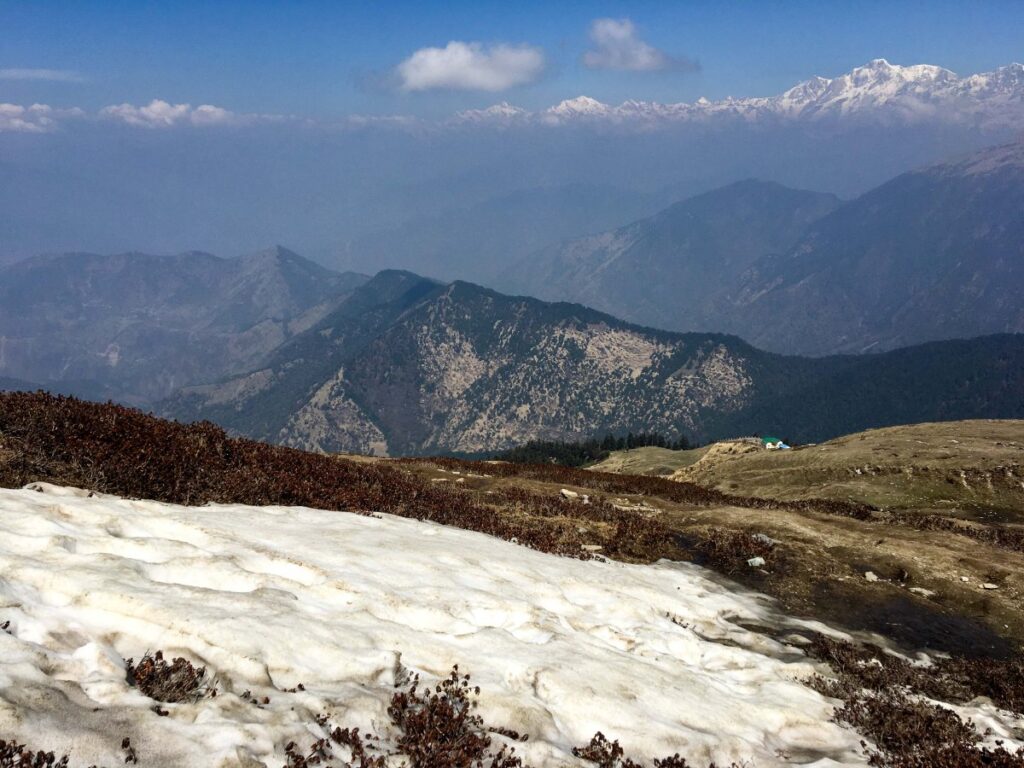
Use a Wide-Angle Lens for Vast Landscapes
The views on the Chopta Chandrashila trek are vast and expansive, so using a wide-angle lens will help you capture the grand scenery. A 16-35mm or 24mm lens is perfect for shooting the vast landscapes of the Tungnath Temple trek.
- Wide Views of Peaks and Clouds: A wide-angle lens will allow you to fit the sweeping mountain ranges, dramatic skies, and cloud patterns into a single frame. This is especially useful when shooting panoramic landscapes from Chandrashila summit trek.
- Contextualizing the Trek: Including trekkers in the frame, with the mountain ranges in the background, will help create a sense of scale, giving context to the grandeur of the Chopta Tungnath trek.
Capture Movement in the Clouds and Sky
One of the most captivating features of the Chopta Tungnath trek from Delhi is the ever-changing sky. Whether it’s the dramatic clouds rolling over the peaks or the fast-moving mists, there are plenty of opportunities to capture movement in the atmosphere.
- Clouds Rolling Over the Peaks: The Chandrashila trek often presents scenes of clouds swirling around the summits, giving the landscape a mystical appearance. Use a slower shutter speed to capture the movement of the clouds while keeping the mountains sharp in focus.
- Time-Lapse Photography: A time-lapse setup can help you capture the changing weather and cloud movements during the trek. This technique will give your viewers a sense of the dynamic atmosphere on the Tungnath Temple trek and Chopta Chandrashila trek.
Embrace the Weather: Capture Dramatic Light and Mood
The weather conditions on the Chopta Tungnath trek can change rapidly, and capturing these dramatic shifts can result in some of the most unique photos.
- Moody Skies: When the weather is overcast or stormy, the clouds often create a moody and atmospheric effect. Use these conditions to capture powerful images of the mountains emerging from the mist.
- Snowfall and Rain: If you’re trekking during the winter months, snow-covered landscapes can make for a stunning backdrop. Rain or snowflakes can add a layer of mystery to your shots, especially around the Tungnath Chandrashila trek.
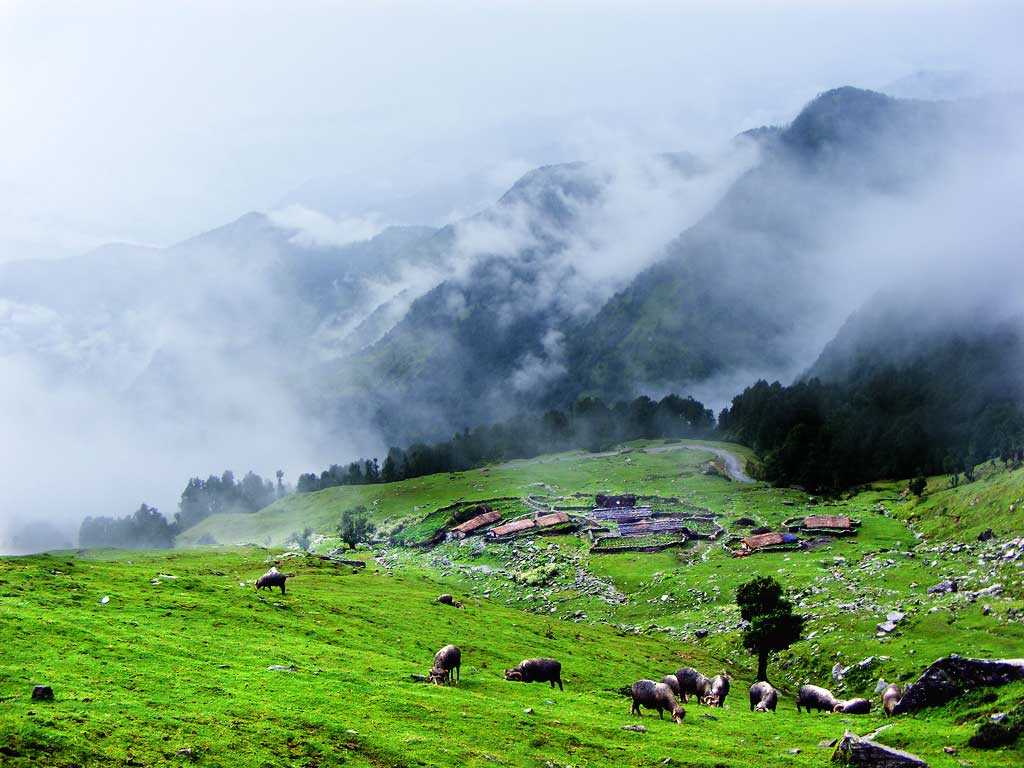
Capture the Golden Moments at the Summit
The summit of the Chandrashila trek is the perfect spot to capture your final shots of the trek. The panoramic view from the summit offers unobstructed views of the surrounding peaks and valleys, perfect for wide-angle photography.
- Golden Hour at the Summit: As the sun rises over the Himalayan range, the soft light will illuminate the peaks, valleys, and clouds in a golden hue. Don’t miss out on this magical moment to capture breathtaking panoramic shots of the Chopta Tungnath trek.
- Portraits and Group Shots: At the summit, take portraits of fellow trekkers or group shots with the peaks in the background to capture the achievement of completing such a challenging trek.
Prepare for Changing Light Conditions
The light during your trek will change throughout the day, and it’s essential to adjust your camera settings accordingly. Whether you’re capturing the sunrise on the Chopta Chandrashila trek or the sunset during the Chopta Tungnath trek from Delhi, understanding your camera settings is key to getting the best shot.
- Adjusting White Balance: The white balance setting helps you capture the true colors of the sky and landscapes. In the mountains, the light can change from warm to cool very quickly, so adjusting the white balance will ensure your photos stay true to life.
- Exposure Compensation: In high-altitude treks like the Tungnath Temple trek, the bright snow or the sky can trick your camera’s light meter. Use exposure compensation to ensure your shots don’t end up overexposed or underexposed.
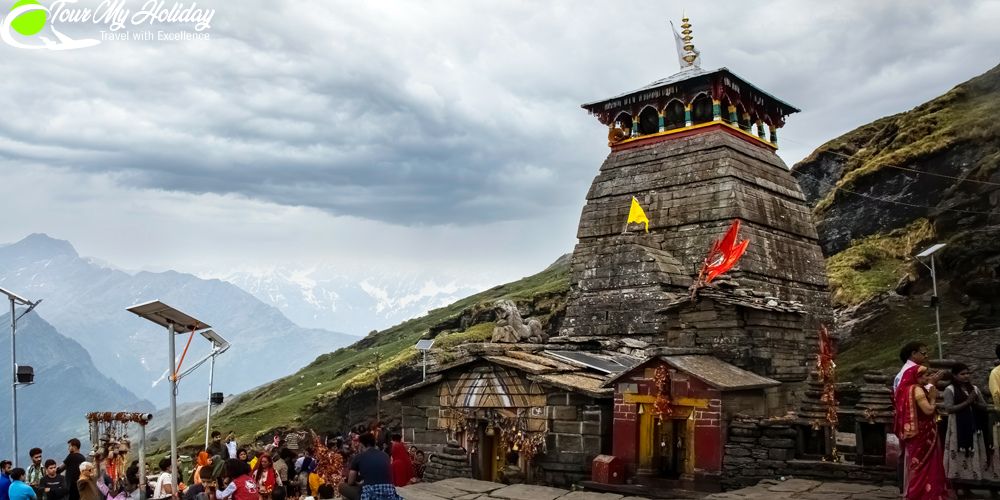
Frequently Asked Questions(FAQ)
What is the Chopta Tungnath Trek?
The Chopta Tungnath Trek is one of the most scenic treks in Uttarakhand, leading trekkers to the Tungnath Temple, which is dedicated to Lord Shiva. It is situated at an altitude of about 3,680 meters, making it one of the highest temples in the world. The trek offers stunning views of the Himalayan range and lush green meadows, making it a popular destination for adventure enthusiasts and spiritual seekers alike.
How difficult is the Chopta Tungnath Trek?
The Chopta Tungnath Trek is considered to be of moderate difficulty. The route is around 3.5 km one way and involves some uphill climbing, making it accessible for beginners with a moderate level of fitness. For trekkers planning to continue to Chandrashila summit, the difficulty level increases slightly due to the added distance and altitude.
What is the Chandrashila Trek?
The Chandrashila Trek is the extension of the Chopta Tungnath Trek, where trekkers continue from the Tungnath Temple to the Chandrashila summit. Located at an altitude of 4,000 meters, the summit offers breathtaking panoramic views of some of the highest peaks in the Himalayan range, including Nanda Devi, Trishul, and Chaukhamba. The trek is both a spiritual and adventurous experience for those seeking a deeper connection with nature.
What is the best time to do the Chopta Tungnath Trek?
The best time to trek to Chopta Tungnath is between March and May, and then again from September to November. During these months, the weather is clear and pleasant, making it ideal for trekking. Winter (December to February) is also a good time for those who love snow, though temperatures can drop significantly, making it more challenging for beginners.
How long is the Chopta Tungnath Trek?
The Chopta Tungnath Trek is around 3.5 km one way, making it a 7 km round trip. If trekkers decide to continue on to Chandrashila summit, an additional 2.5 km is added to the trek, making the total distance approximately 10 km. The trek can be completed in about 4 to 6 hours, depending on the pace and stamina.
Can I do the Chopta Tungnath Trek from Delhi?
Yes, you can easily do the Chopta Tungnath Trek from Delhi. Several tour operators offer packages that include transportation from Delhi to Chopta, along with guides and accommodations. It’s a popular option for those looking to make the most of a weekend or short vacation.
Is the trek suitable for beginners?
The Chopta Tungnath Trek is suitable for beginners with a moderate level of fitness. While the trail to Tungnath Temple itself is not very long, it can be steep at certain points. However, if you prepare yourself by walking regularly and maintaining basic fitness, you can comfortably complete the trek. For those continuing to Chandrashila summit, a slightly higher level of fitness is required.
What should I carry on the Chopta Tungnath Trek?
When preparing for the Chopta Tungnath Trek, make sure to pack essential items such as comfortable trekking shoes, warm clothing, rain gear, snacks, a water bottle, and a first aid kit. Don’t forget your camera to capture the stunning views along the way, and be sure to carry your identification and any required permits.
Are there any accommodation options on the trek?
There are several accommodation options available at Chopta, ranging from guesthouses and homestays to campsites. Many trekkers prefer staying in these accommodations before or after their trek to Chandrashila summit to enjoy the serene environment and relax amidst nature.
How is the weather in Chopta during the trek?
The weather in Chopta varies depending on the season. Summers (March to May) are generally pleasant, with daytime temperatures ranging between 15°C and 20°C. Winters (December to February) are cold, with snow covering the trails, making it ideal for snow lovers but challenging for beginners. It’s important to check weather forecasts before embarking on the trek and pack accordingly.
Can I do the trek solo?
Yes, solo trekking is allowed on the Chopta Tungnath trek. However, it is advisable to go with a guide, especially if you are a first-time trekker. Many trekking agencies offer guided tours, which ensure safety and provide insights into the local culture and wildlife. A guide can also help in navigating the terrain.
Are there any age restrictions for the trek?
There are no specific age restrictions for the Chopta Tungnath trek. However, it is essential that trekkers, regardless of age, are in good health and capable of handling the physical demands of the trek. Children and elderly trekkers should be closely monitored and should have prior trekking experience for safety.
What kind of fitness level is required for the trek?
A moderate level of fitness is required for the Chopta Tungnath trek. The trek involves some uphill sections, and trekkers should be able to walk long distances without difficulty. If you plan to continue to the Chandrashila summit, additional fitness is needed due to the higher altitude and more challenging terrain.
Is it safe to trek to Tungnath Temple in the winter?
Yes, trekking to Tungnath Temple in winter is safe, provided you are well-prepared. The trek becomes more challenging due to snow and low temperatures, so proper gear, including thermal wear, snow boots, and trekking poles, is necessary. It’s also crucial to check the weather conditions before you go and to carry enough supplies.
How can I reach Chopta from Delhi?
To reach Chopta from Delhi, you can either take a train to Haridwar and then a bus or taxi to Chopta, or you can drive directly. Several travel companies also offer tour packages that include transportation from Delhi, along with a guide and accommodations.
Can I take kids on the trek?
Yes, kids can join the Chopta Tungnath trek, provided they are in good health and comfortable with trekking. It is advisable to ensure that children take regular breaks, stay hydrated, and wear proper footwear for their safety and comfort.
What is the significance of Tungnath Temple?
Tungnath Temple holds great spiritual significance as it is part of the Panch Kedar temples, dedicated to Lord Shiva. The temple is the highest among the Panch Kedar temples and is believed to have been built by the Pandavas to seek blessings from Lord Shiva. Trekking to this sacred temple provides a spiritual experience for trekkers.

